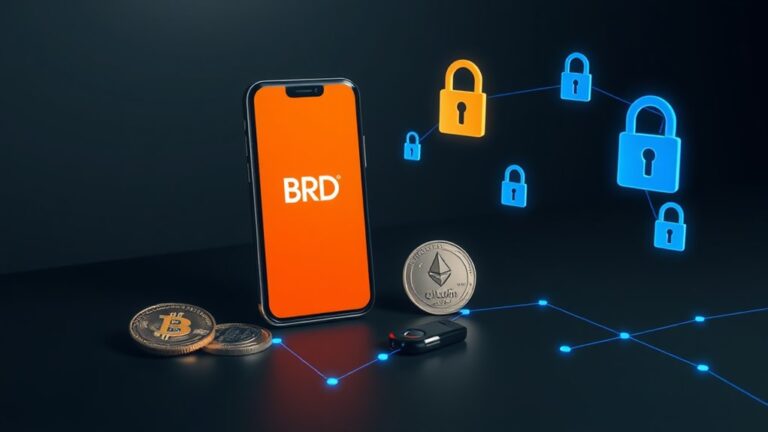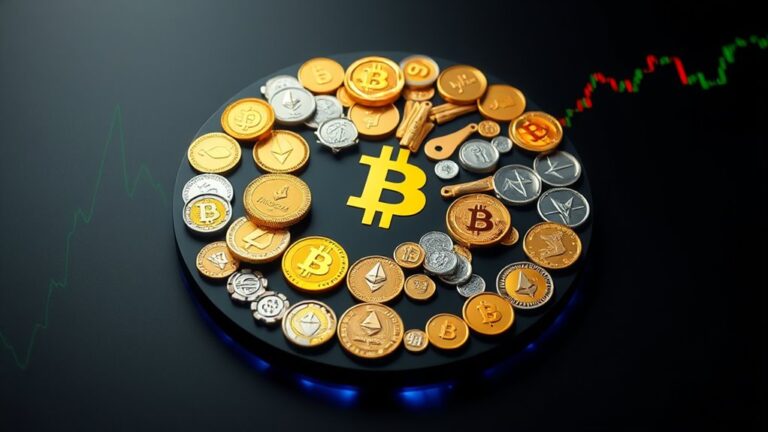Anti-Money Laundering in Crypto
Note: This post may contain affiliate links, and we may earn a commission (with No additional cost for you) if you purchase via our link. See our disclosure for more info. The gold and crypto world is constantly changing. This is not financial, investment, legal, or professional advice. So, please verify the information on the gold and cryptocurrency provider’s websites.
Anti-money laundering in crypto is a tough nut to crack. Sure, there are KYC measures and transaction monitoring in place, but they often fall flat. Anonymity? It's a huge problem. Like, 0.05% of all trades were tied to money laundering last year. Yikes! Regulations exist, but they're like a Swiss cheese—full of holes. The tech to fix this isn't perfect either. Crypto crime is like chasing shadows. Curious about how this all shakes out?

In the wild west of cryptocurrency, anti-money laundering (AML) efforts are like trying to catch smoke with your bare hands. It's a chaotic landscape. You've got KYC processes, where customers must prove their identities. Why? To stop anonymous transactions, of course. But let's be real—how effective is that when people are still using pseudonyms and privacy coins? The irony is thick.
In the chaotic world of cryptocurrency, KYC measures struggle against anonymity, leaving us questioning their true effectiveness.
Then there's transaction monitoring, where platforms scramble to spot suspicious activities in real time. But, good luck with that! The sheer volume of transactions is staggering. They're supposed to report flagged transactions to the financial authorities. That's right, suspicious activity reports are mandatory. Yet, many slip through the cracks. Crypto money laundering accounted for 0.05% of all cryptocurrency transaction volume in 2021, highlighting just how prevalent the issue remains.
Sanctions screening? Oh, they've got automated checks against watchlists and PEPs. But ask yourself: how often do these systems get updated?
And the Crypto Travel Rule? It's a fancy term for sharing customer data when cross-border transactions exceed $3,000. Great in theory, but not always practical.
The regulatory framework is a maze, with FATF recommendations pushing for compliance. The EU's 5AMLD? Crypto platforms need to register and implement AML measures. Sounds simple enough, but execution is another story. Regulated entities must monitor transactions for suspicious activities to adhere to compliance requirements.
In the U.S., FinCEN and CFTC have their own set of guidelines. It's a patchwork of regulations that leaves many loopholes wide open. Proper identity verification not only ensures compliance but builds trust among serious investors looking for legitimate platforms.
Technological solutions like blockchain analytics and AI-driven risk assessments sound impressive. Yet, they're not foolproof. Anonymity risks linger. Jurisdictional gaps exist.
And let's not even get started on the NFT market, where valuation is subjective, and money laundering is just waiting to happen.
In a world where transactions can vanish into thin air, catching money launderers feels like chasing shadows. The challenges are real, the stakes are high, and the fight against crypto crime is far from over.
Frequently Asked Questions
What Are the Penalties for Non-Compliance With AML Regulations in Crypto?
Non-compliance with AML regulations can hit hard—think huge fines and penalties.
Companies can face millions, even billions in dollars. In 2023, for instance, crypto firms racked up a jaw-dropping $5.8 billion in fines.
Binance, the heavyweight, coughed up $4.3 billion alone. That's not pocket change.
If they think they can skate by, they quickly learn that regulators don't mess around.
How Do Exchanges Report Suspicious Activities to Authorities?
Exchanges report suspicious activities by filing SARs when they spot odd transactions. Think of it as a red flag parade.
They've got 30 days to report after a suspicious transaction pops up. If it's over $10,000? Cue the CTR filing.
But let's be real—some exchanges are drowning in alerts. Missed reports, backlogs, and training gaps make it messy.
And if they slip up? Well, there are penalties, and they're not pretty.
Can Anonymous Transactions Be Completely Eliminated in Crypto?
Can anonymous transactions ever be fully wiped out? Not likely.
Sure, tech like tracing software exists, but there's always a workaround. Mixers, privacy coins, and sneaky protocols make it a tough game.
Ever heard of Monero? It thrives on secrecy.
And let's be real, people love their privacy.
So, while regulators try to play catch-up, the cat-and-mouse game continues.
Complete elimination? A pipe dream, if you ask anyone with half a brain.
How Does AML Affect Crypto Innovation and Development?
AML regulations are a double-edged sword. On one hand, they aim to prevent crime. On the other, they slow down innovation.
Imagine trying to sprint while wearing cement shoes. That's what compliance feels like for developers. They face high fines and endless paperwork. Sure, it keeps the bad guys at bay, but it also stifles creativity.
Smaller projects struggle to keep up, leaving the big players to dominate. Not exactly a fair game, is it?
Are There Global Differences in AML Regulations for Cryptocurrencies?
Globally, AML regulations for cryptocurrencies are a mixed bag. Some countries, like the EU and the U.S., have tight rules and oversight—everyone's got to play nice.
Others? Not so much. Japan's got its act together, while China's just said “nope” to crypto.
Meanwhile, Brazil's busy with fines and regulations. It's a patchwork quilt of rules, really. Different approaches everywhere, leaving crypto enthusiasts scratching their heads.
Who knew compliance could be this complicated?













4 Comments